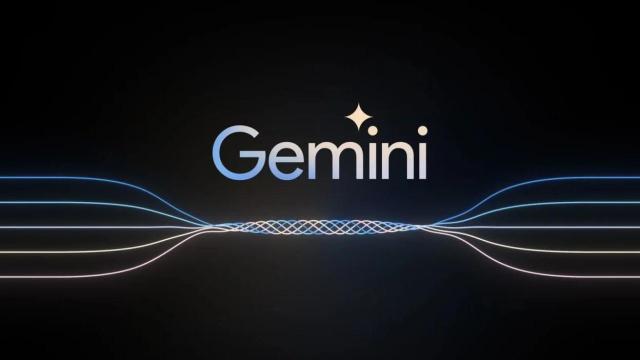Google Gemini is the latest (and greatest) AI language model from Google, and it stands to offer solid capabilities that rival that of OpenAI’s GPT-4. With all the recent releases of AI chatbots and systems, though, understanding exactly what Gemini is and how you can use it might be a bit difficult.
What is Google Gemini?
The simple answer here is that Gemini is Google’s answer to GPT-4, the large language model (LLM) that powers ChatGPT Plus and Microsoft’s Copilot. It’s the most up-to-date and capable model that the search giant has created thus far, and it plans to use it in a myriad of ways.
Who can use Gemini?
Anyone can use Gemini, however, you won’t use it like ChatGPT. As I noted above, Gemini is the language model that will run Google’s AI chatbot, similarly to how GPT runs things behind the scenes in ChatGPT. As such, you won’t be able to go to Google’s website and start talking to Gemini. Instead, you’ll need to utilize one of its three different versions to create an application that harnesses the power Gemini offers. Alternatively, you can just wait for someone else to make one—or utilize Bard, Google’s chatbot, to see what Gemini has to offer once it gets updated.
Gemini has three tiers
Google designed Gemini 1.0 to offer three different sizes, or tiers. These sizes are designed to help the model make the most of its capabilities for complex tasks, everyday tasks, and on-device tasks.
Gemini Ultra is the largest and most capable version of Google Gemini and it will be utilized to complete the most complex tasks that Gemini can handle. This will likely be one of the primary versions seen behind Bard Advanced and other AI chatbots that utilize Gemini for extensive and complex tasks and it’ll offer the most next-generation performance out of the three.
Gemini Pro is what Google considers the “best model for scaling” and the company says that it will be able to handle a wide range of tasks while delivering state-of-the-art performance. It’s the middle-ground plan, which will probably be the most widely utilized and is currently available to try in Bard.
Gemini Nano is the smallest and most efficient version of the model and Google says it was designed to run off devices as small as smartphones. The company already plans to utilize Gemini Nano in the Pixel 8 and Pixel 8 Pro smartphones, where it hopes to let AI expand how we use our devices going forward.
How does Gemini compare to GPT-4?
As I noted above, Google wants Gemini to be its answer to OpenAI’s GPT-4. According to some of the stats that Google shared in its official announcement, the new model stands up really well to GPT-4V (GPT-4 with vision) and other models, as well. Google says Gemini can achieve 59.4% when benchmarked in MMMU (Multi-discipline college-level reasoning problems), whereas GPT-4V reaches 56.8%.

The differences between the two are not staggering, by any means, but Gemini’s performance should hopefully push OpenAI to make GPT-4 even better. This kind of competition is exceptionally useful for consumers, as it ensures that both models will continue to improve going forward as they try to keep up with and surpass the other.
Google says that Gemini was trained to recognize and understand text, audio, images, and more, all at the same time. This more sophisticated reasoning should allow the model to handle whatever you throw at it, though time will tell exactly how good it does in real-world applications.
Is Gemini accurate?
Like any AI language model, Gemini will be susceptible to hallucinating and generating bad information. While the company hasn’t shared any specifics about how accurate Gemini is comparatively, it will always be important to double-check any information the model returns to you before publishing it anywhere. That said, these AI systems will undoubtedly continue to become more accurate over time, though the risk of hallucinations will likely always be there.
When can I develop with Gemini?
If you’re interested in developing with Gemini, Google says it will release developer access for the Gemini Pro and Gemini API starting on Dec. 13. Gemini Ultra is still slated as “coming soon,” as Google says it is working through extensive trust and safety checks at the moment. Google has yet to share any pricing-related information about Gemini at this time. Google also hasn’t shared what kind of character or context limits Gemini will work with, though I expect that information to come out once users have open access to the model. We know that ChatGPT’s character limit is around 4,000 characters (based on community research), so it is likely we’ll see a similar approach with Gemini.

Leave a Reply
You must be logged in to post a comment.